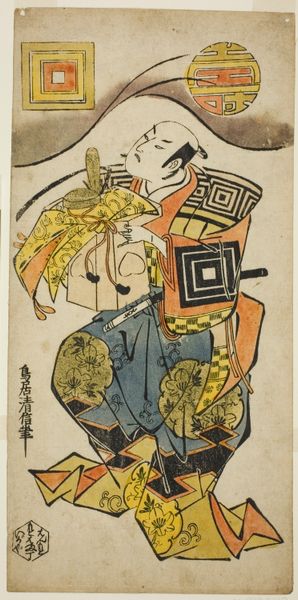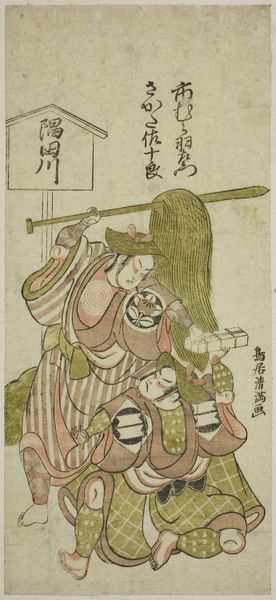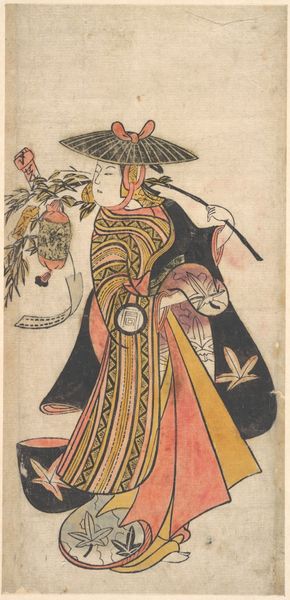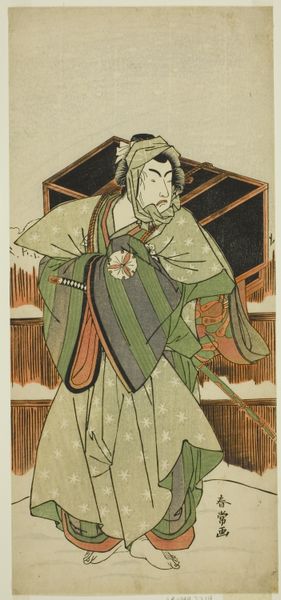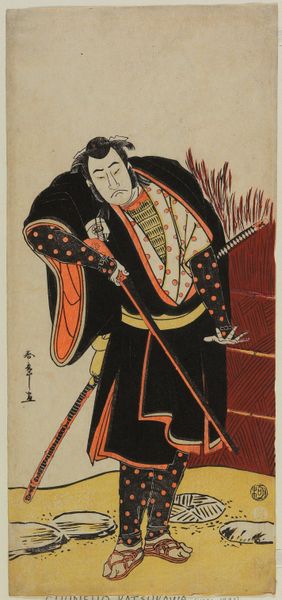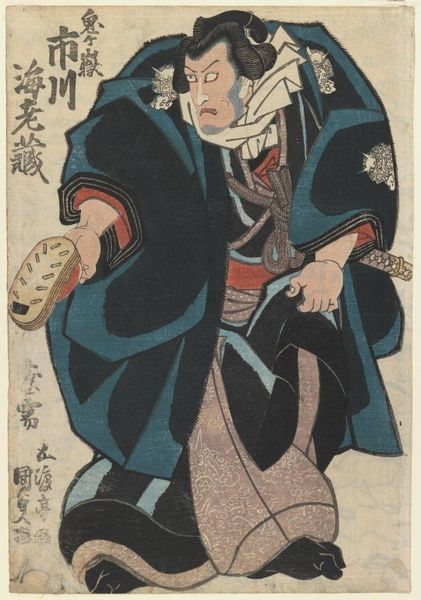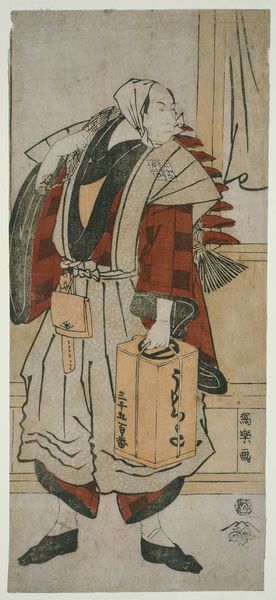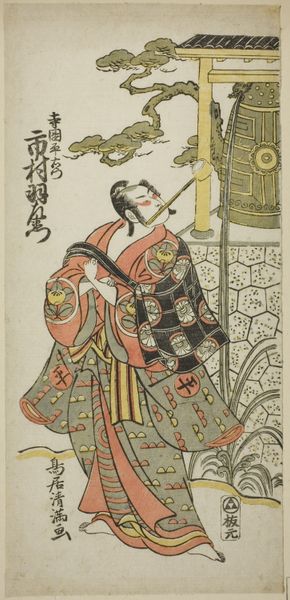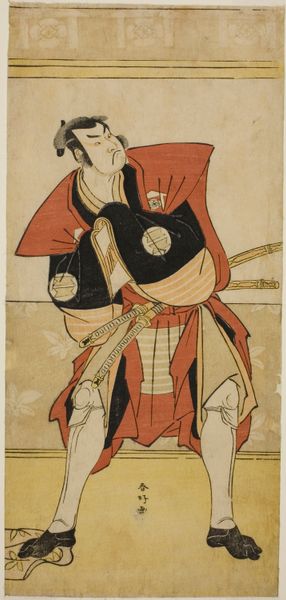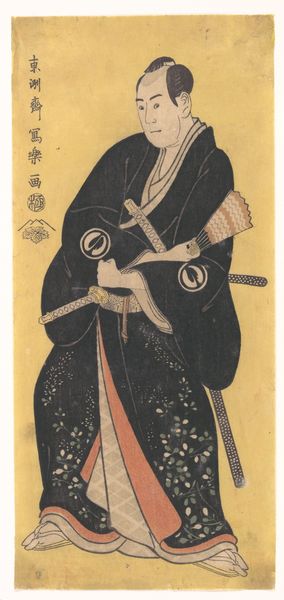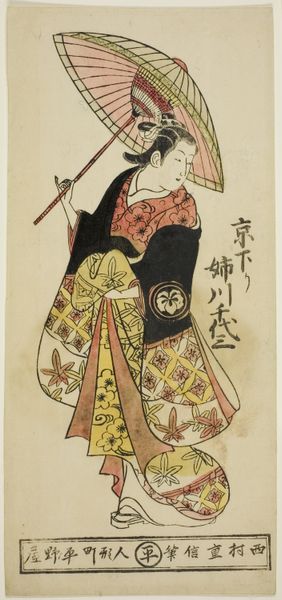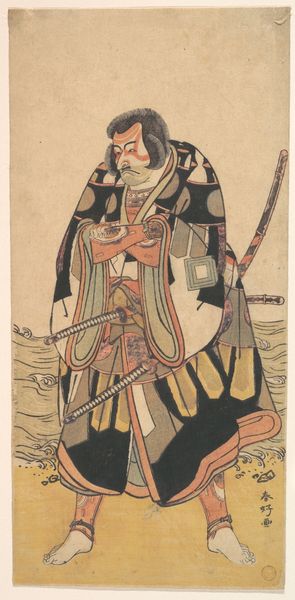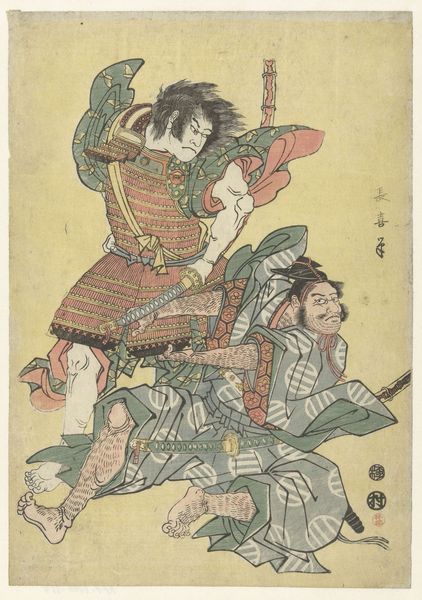
print, woodblock-print
#
portrait
#
weapon
# print
#
asian-art
#
ukiyo-e
#
woodblock-print
Dimensions: height 364 mm, height 243 mm
Copyright: Rijks Museum: Open Domain
Curator: Here we have "Nakamura Shikan II als Ariwara no Narihira," a woodblock print created around 1834 by Shunbaisai Hokuei. It captures a celebrated Kabuki actor in the role of Ariwara no Narihira, a famous Heian-era poet. What strikes you most about this piece? Editor: Immediately, the vibrant, saturated blues catch my eye. But there's a sadness, a sense of melancholic contemplation emanating from the figure. He seems burdened, almost reluctantly poised, though ready to draw his sword. What about you? Curator: I find it fascinating how these actor prints, known as yakusha-e, blurred the lines between celebrity culture and social commentary in the Edo period. The print becomes a vehicle for Hokuei to reflect not just Narihira but also, arguably, the status of actors within 19th-century society. Editor: Absolutely. Kabuki actors were superstars, but their social position remained complex, even marginalized. That knowing expression, the almost pained brow… Is that the artist's commentary on the pressures and contradictions of fame? Curator: That’s definitely a crucial aspect to consider. Woodblock prints like these were instrumental in shaping public perception. Hokuei had the power to idealize, critique, or subtly humanize these public figures, and by extension comment on society. It's political imagery disguised as entertainment. Editor: Also interesting is how the portrayal adheres to very strict artistic conventions – you see that flattened perspective, those stylized cloud bands above – while suggesting psychological depth. I find myself wondering what other dimensions these Kabuki portrayals might explore concerning social class, gender roles, and other things? Curator: That's a compelling point. Considering Ukiyo-e's widespread consumption, these images offered subtle negotiations of identity. Editor: Yes, indeed! Well, it's clear that examining works such as this portrait, alongside an understanding of their historical production, can certainly deepen our perspective about popular cultures of the past and also challenge normative discourses within contemporary popular culture. Curator: Indeed. This examination highlights art’s engagement with pressing sociopolitical matters, suggesting possibilities of cultural transformation that is always an urgent agenda of the present and the future.
Comments
No comments
Be the first to comment and join the conversation on the ultimate creative platform.
